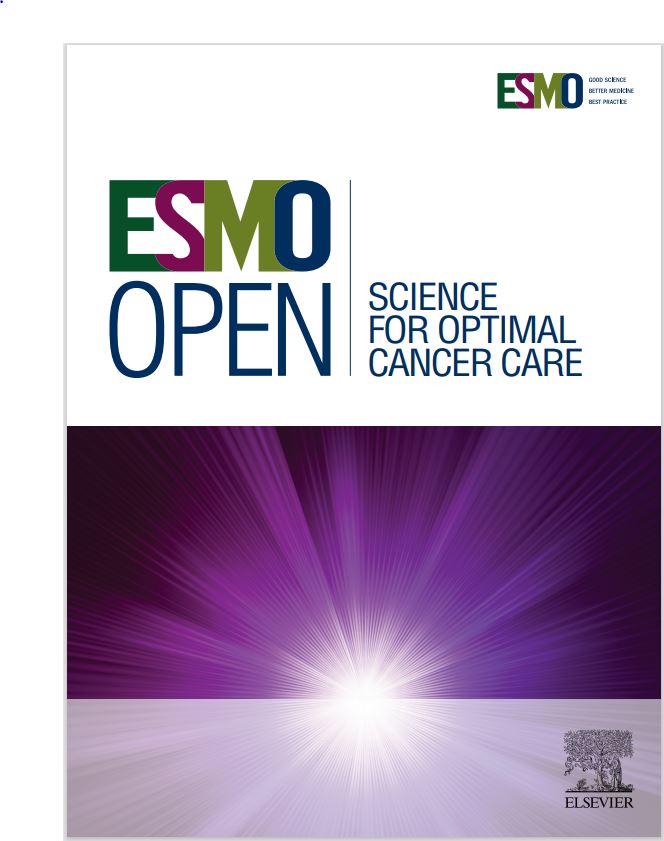Understanding first-line treatment patterns and survival outcomes across sociodemographic groups of women with metastatic triple-negative breast cancer in the United States: a real-world study
IF 8.3
2区 医学
Q1 ONCOLOGY
引用次数: 0
Abstract
Background
Triple-negative breast cancer (TNBC) has poor prognosis, and disproportionately affects young black women and BRCA1/2 mutation carriers. We describe sociodemographic differences in real-world treatment patterns and survival outcomes in women with metastatic TNBC (mTNBC) in the United States.
Patients and methods
This retrospective, real-world cohort study used de-identified data from patients in the Flatiron Health database diagnosed with mTNBC who received first-line (1L) treatment between January 2018 and July 2022. Patient characteristics, treatment patterns, real-world overall survival (rwOS), and time to next treatment or death (TTNTD) were determined in the overall population and by race, socioeconomic status (SES) index, United States region, and treatment setting.
Results
Of 1555 women diagnosed with mTNBC, 930 women received 1L treatment and were included. Overall, 55% of women were white, 43% were from the South, and 83% were treated at community centers. 1L treatment patterns were similar across all subgroups. Overall, 69% of patients received chemotherapy only, 28% received programmed death-(ligand) protein 1 [PD-(L)1] inhibitors, and 2% poly (ADP-ribose) polymerase inhibitors (PARPi). Documented testing rate for PD-L1 expression was 80% and highest in the Northeast (91%), Midwest (86%), and community centers (82%). Among 559 women with documented PD-L1 expression, 82% were treated with PD-(L)1 inhibitors in any metastatic line. Documented testing rate for BRCA1/2 mutation was 55% and highest in the West (63%) and in academic practices (59%). Among 508 women with documented BRCA1/2 mutations, 56% were treated with PARPis in any metastatic line; no black woman received a 1L PARPi regardless of mutation status. There were no statistically significant differences in survival outcomes across sociodemographic groups, and, overall, patients had poor survival (rwOS: 12.0 months; TTNTD: 4.2 months).
Conclusions
This study demonstrated generally similar treatment patterns and poor survival outcomes across sociodemographic groups, highlighting an unmet need for more efficacious treatments for all women with mTNBC.
了解美国转移性三阴性乳腺癌妇女的一线治疗模式和生存结果:一项真实世界的研究。
背景:三阴性乳腺癌(TNBC)预后较差,主要发生在年轻黑人女性和BRCA1/2突变携带者中。我们描述了美国女性转移性三阴癌(mTNBC)的现实治疗模式和生存结果的社会人口学差异。患者和方法:这项回顾性的真实世界队列研究使用了Flatiron Health数据库中诊断为mTNBC的患者的去识别数据,这些患者在2018年1月至2022年7月期间接受了一线(1L)治疗。患者特征、治疗模式、真实世界总生存期(rwOS)和下一次治疗或死亡时间(TTNTD)在总体人群和种族、社会经济地位(SES)指数、美国地区和治疗环境中确定。结果:在1555名被诊断为mTNBC的女性中,930名女性接受了1L治疗并被纳入。总体而言,55%的女性是白人,43%来自南方,83%在社区中心接受治疗。l治疗模式在所有亚组中相似。总体而言,69%的患者仅接受化疗,28%接受程序性死亡(配体)蛋白1 [PD-(L)1]抑制剂,2%接受聚(adp -核糖)聚合酶抑制剂(PARPi)。PD-L1表达的记录检测率为80%,在东北部(91%)、中西部(86%)和社区中心(82%)最高。在559名记录有PD- l1表达的女性中,82%在任何转移系中接受了PD-(L)1抑制剂治疗。记录在案的BRCA1/2突变检测率为55%,最高的是西方(63%)和学术实践(59%)。在508名记录有BRCA1/2突变的女性中,56%在任何转移系中接受了PARPis治疗;无论突变状态如何,没有黑人女性接受1L PARPi。不同社会人口统计学组的生存结局无统计学差异,总体而言,患者的生存期较差(rwOS: 12.0个月;TTNTD: 4.2个月)。结论:该研究表明,在不同的社会人口统计学群体中,治疗模式大致相似,生存结果较差,强调了对所有mTNBC女性更有效治疗的需求尚未得到满足。
本文章由计算机程序翻译,如有差异,请以英文原文为准。
求助全文
约1分钟内获得全文
求助全文
来源期刊

ESMO Open
Medicine-Oncology
CiteScore
11.70
自引率
2.70%
发文量
255
审稿时长
10 weeks
期刊介绍:
ESMO Open is the online-only, open access journal of the European Society for Medical Oncology (ESMO). It is a peer-reviewed publication dedicated to sharing high-quality medical research and educational materials from various fields of oncology. The journal specifically focuses on showcasing innovative clinical and translational cancer research.
ESMO Open aims to publish a wide range of research articles covering all aspects of oncology, including experimental studies, translational research, diagnostic advancements, and therapeutic approaches. The content of the journal includes original research articles, insightful reviews, thought-provoking editorials, and correspondence. Moreover, the journal warmly welcomes the submission of phase I trials and meta-analyses. It also showcases reviews from significant ESMO conferences and meetings, as well as publishes important position statements on behalf of ESMO.
Overall, ESMO Open offers a platform for scientists, clinicians, and researchers in the field of oncology to share their valuable insights and contribute to advancing the understanding and treatment of cancer. The journal serves as a source of up-to-date information and fosters collaboration within the oncology community.
 求助内容:
求助内容: 应助结果提醒方式:
应助结果提醒方式:


